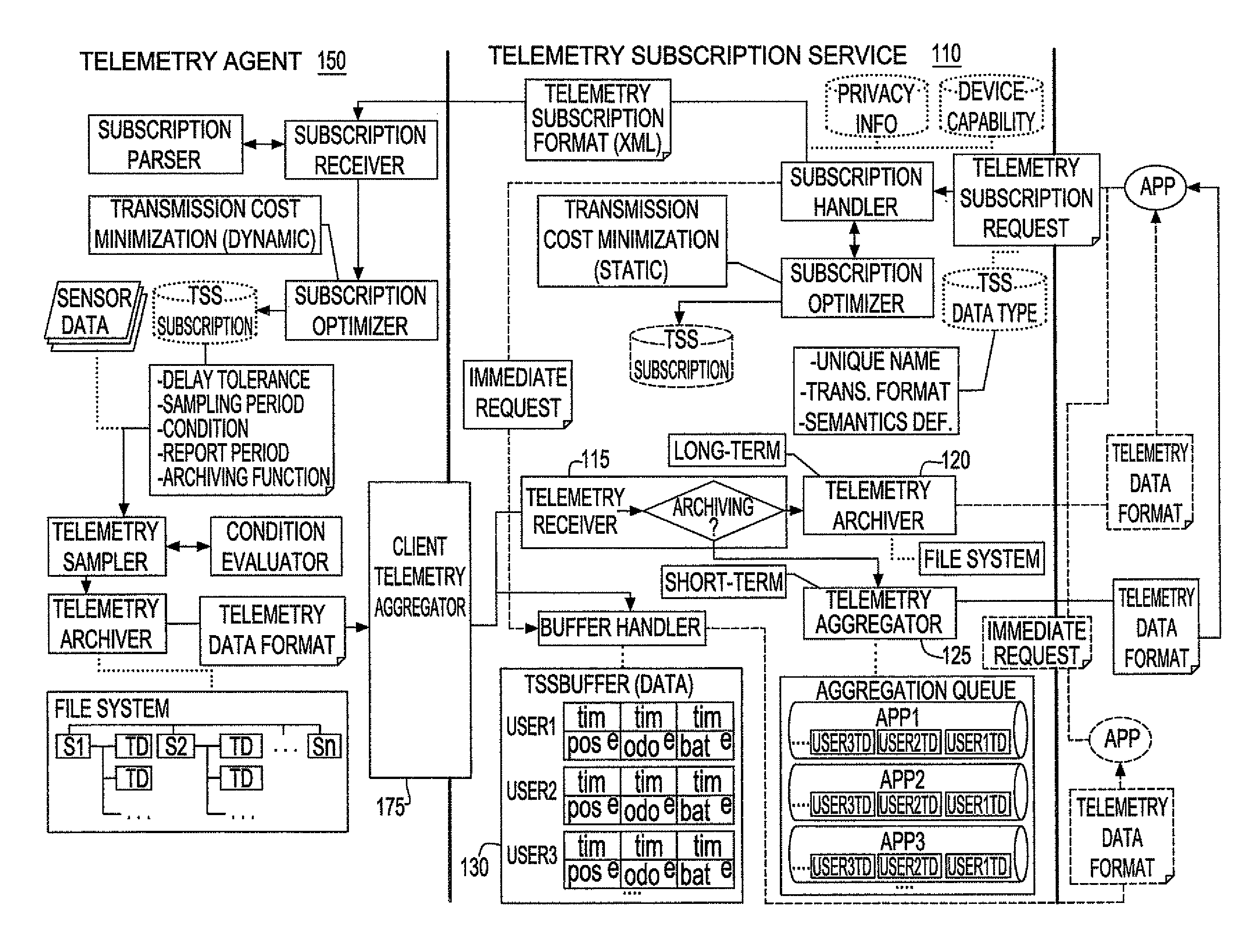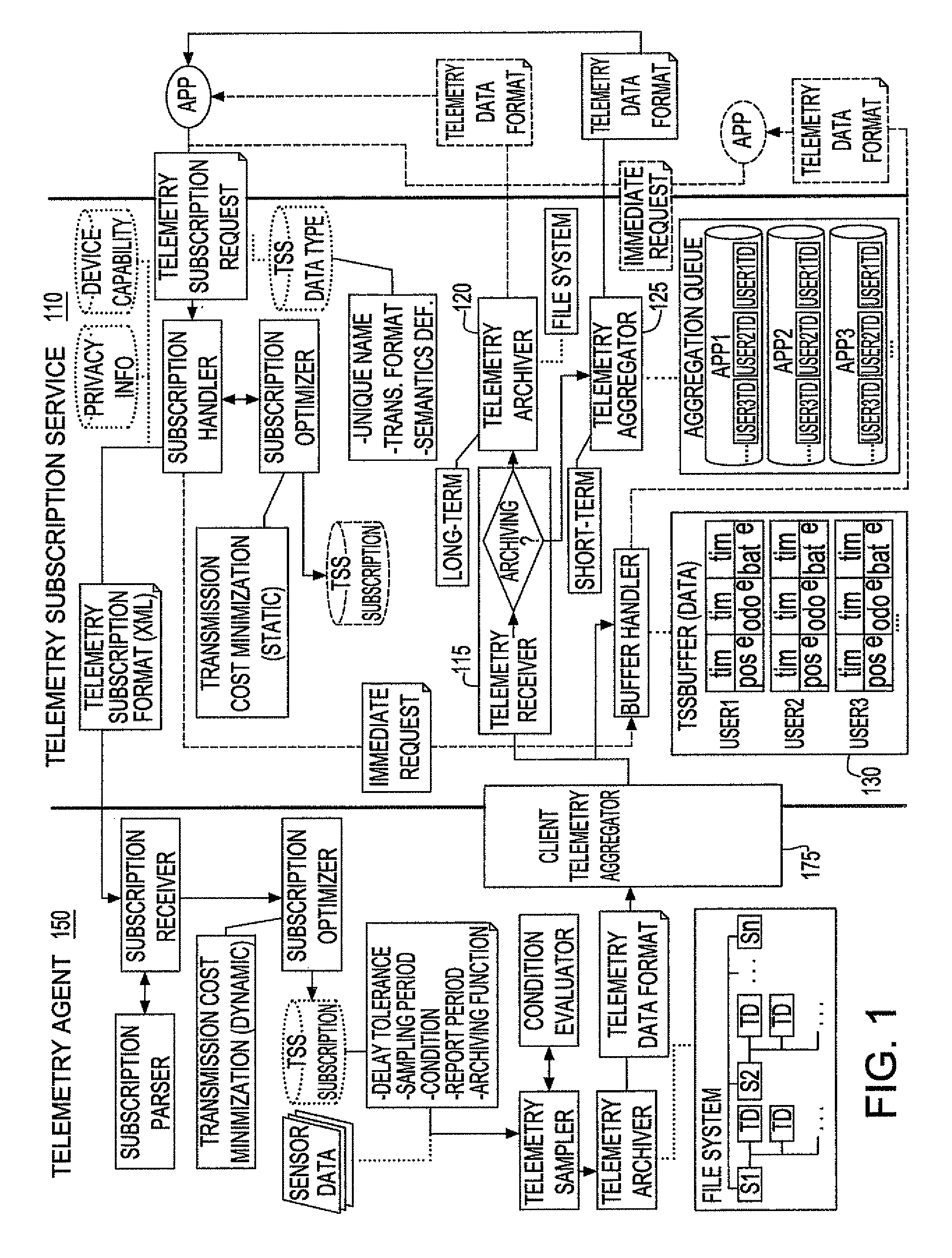Scalable acquisition of telemetry data from instrumented systems enitities over a wireless network
a technology of instrumented systems and wireless networks, applied in transmission systems, wireless architecture usage, instruments, etc., can solve the problems of non-optimal application-provided solution and no existing sensor-network middleware (snm) providing these functions, so as to reduce wireless network, wireless network, and sensor reading load.
- Summary
- Abstract
- Description
- Claims
- Application Information
AI Technical Summary
Benefits of technology
Problems solved by technology
Method used
Image
Examples
Embodiment Construction
Overview
[0016]The inventive system for telemetry data acquisition supports two main types of requests: requests for periodic delivery of telemetry data, and requests for one-time delivery of telemetry data. FIG. 1 is a functional description of the system, highlighting both types of telemetry data acquisition. The system flow of one-time requests is shown in dashed lines, where the system flow for processing requests for periodic delivery is shown in solid lines.
Subscription Requests (Periodic)
[0017]When a subscription for a client's telemetry data is received, the telemetry subscription service (TSS) 110 first analyzes the subscription with respect to other subscriptions for the same client application, with the goal of adjusting the subscriptions relative to each other in order to create an optimized set (See Section 2). The TSS 110 then sends the subscription to the client application, along with any updates required due to changes to other subscriptions.
[0018]At the client appli...
PUM
 Login to View More
Login to View More Abstract
Description
Claims
Application Information
 Login to View More
Login to View More - R&D
- Intellectual Property
- Life Sciences
- Materials
- Tech Scout
- Unparalleled Data Quality
- Higher Quality Content
- 60% Fewer Hallucinations
Browse by: Latest US Patents, China's latest patents, Technical Efficacy Thesaurus, Application Domain, Technology Topic, Popular Technical Reports.
© 2025 PatSnap. All rights reserved.Legal|Privacy policy|Modern Slavery Act Transparency Statement|Sitemap|About US| Contact US: help@patsnap.com



